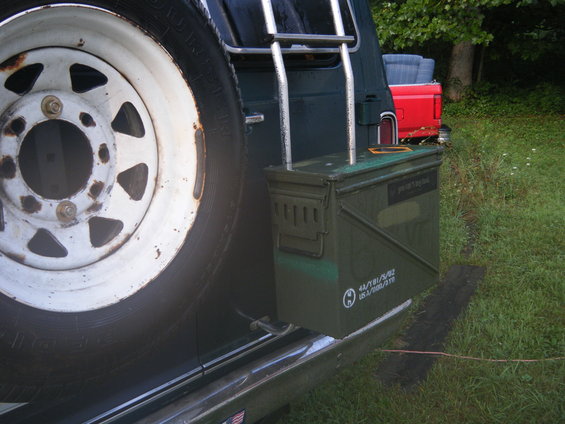stkshooter
Observer
.
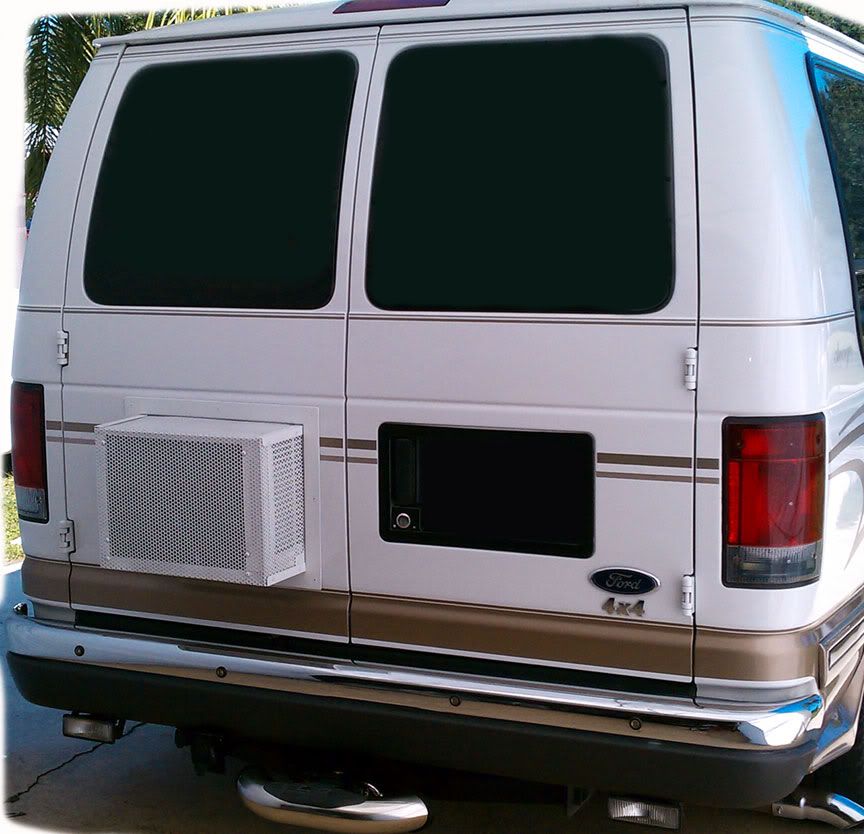
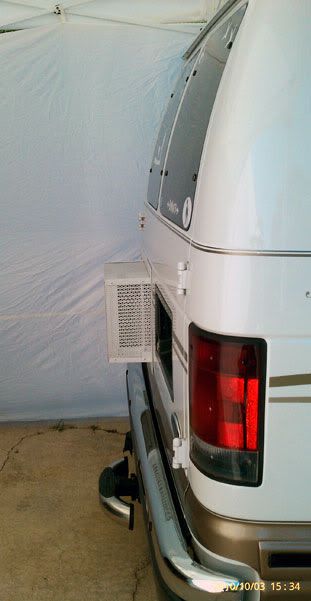
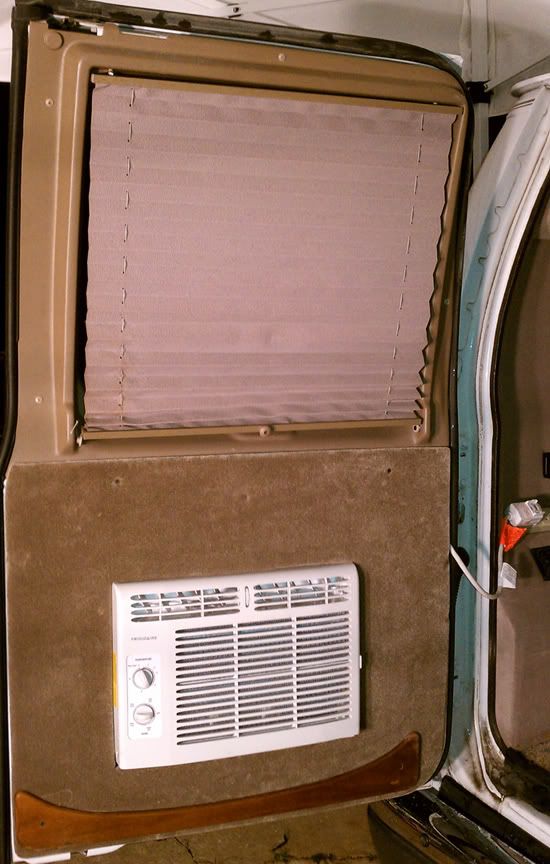
This seems to be an ongoing subject in many forums over the years but I have never seen an install like this or anyone selling kits to do so.
I've seen side window projects you set up when camping or back window installs using plywood or plastic, etc. I was looking for something that could handle off road driving and ready to use when I needed it.
I'm working on DIY website showing step by step pictures for those interested but here is a look at the in progress picture. I Plan to add solid cover over outside with louvers like you see on the old hot rod hoods. so it looks more like storage box vs air conditioner and painted to match vehicle.
My Yamaha 2000 runs A/C unit just fine since it only pulls 450 watt. (start up 4.5 amp, I tested with meter. if you wait 1-2 min. between turning unit off and restarting the pressure drops and was about 4.5-4.8 amp on restart up. Now if you pull the plug and plug it back in which you would never do the amp draw can reach 22 amps but waiting even 20-30 seconds and plugging in changes to 8-9 amps. Now wait 1-2 min. which is what the unit would do on it's own and amp draw is back to 4.5 approx.) Wanted to clear that up since I have heard people say these little units draw much more than that. This leaves enough power for everything else I would run provided A/C compressor is not on when using microwave but that is easy enough to prevent.
FYI: power boosters or capacitors for A/C can be added to larger A/C units to help smaller gen. handle start up. Do a google search, lots of DIY on the subject.
Will a 5000 btu cool the interior of an insulated van in the Florida heat ? depends on many variables but I can say it cools much better than not having A/C :a3: I placed thermometer outside in direct sunlight and one inside heated van ( Elk factory conversion van only no extra insulation has been added ) which had been sealed up in sun till 1 pm. with no window covers other than windshield. It was well over 110 degree inside and outside reads 110 in direct sunlight while in damp shaded corner of house with oak trees reads 90 then inside van reads 84 degree after 90 min. approx. with 45% humidity inside and 85% outside. Park vehicle in shade and that number quickly dropped to 74 degree. Once the sun went down and outside temp was upper 80's the inside temp fell to 63 in 90 min. with 35% humidity. Unit may not work as well as 10k to 13,5k roof air but total cost was under $500. That includes Upholstry shop after cutting hole in panel.
Because of door pillar support and locking latch / cable inside door you don't have room for a larger unit without cutting door pillar and I wouldn't suggest that unless your going to mod door support. Unit is riveted to A/C frame and then riveted to van door. because the 2 pc. slides together it sandwiches the door between them and frame is riveted to door panel inside and out. Very sturdy install. Unit sticks out 6" beyond door.
You can pick up A/C unit from Sears for $100 and when I get a chance to finish website you can see how it's done and purchase fabricated frame support pieces if you like.
Also wanted to touch on van insulation. People may think conversion vans are already insulated from the factory but as you can see by my ELK conversion pic. they are not. But mine is now. All this was done after adding A/C in rear door and should make a huge diff. I insulated windows also. Floor has 2 layers of carpet, 1 down & 1 up is how conversion company does it.
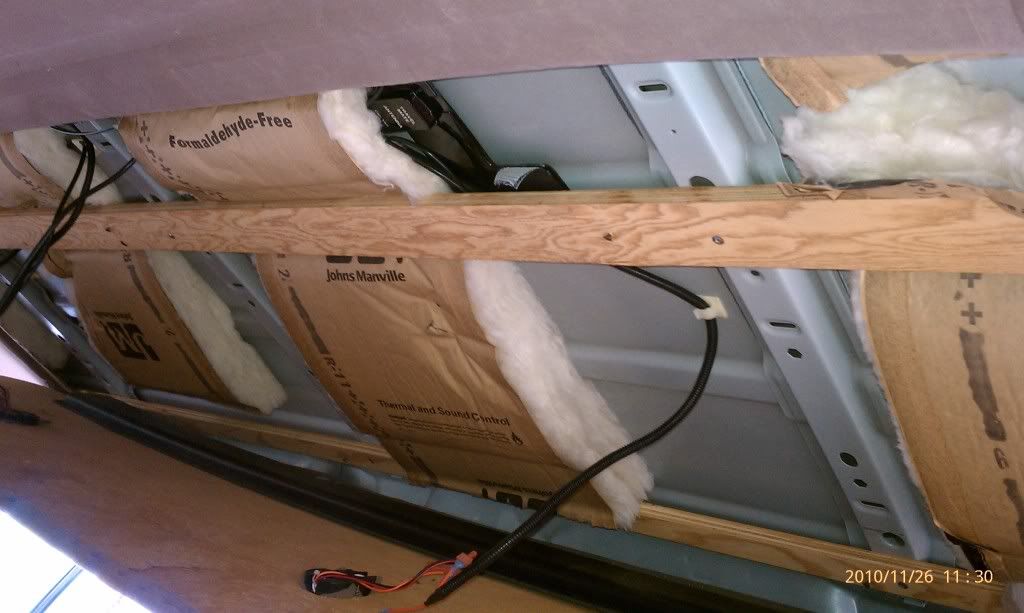
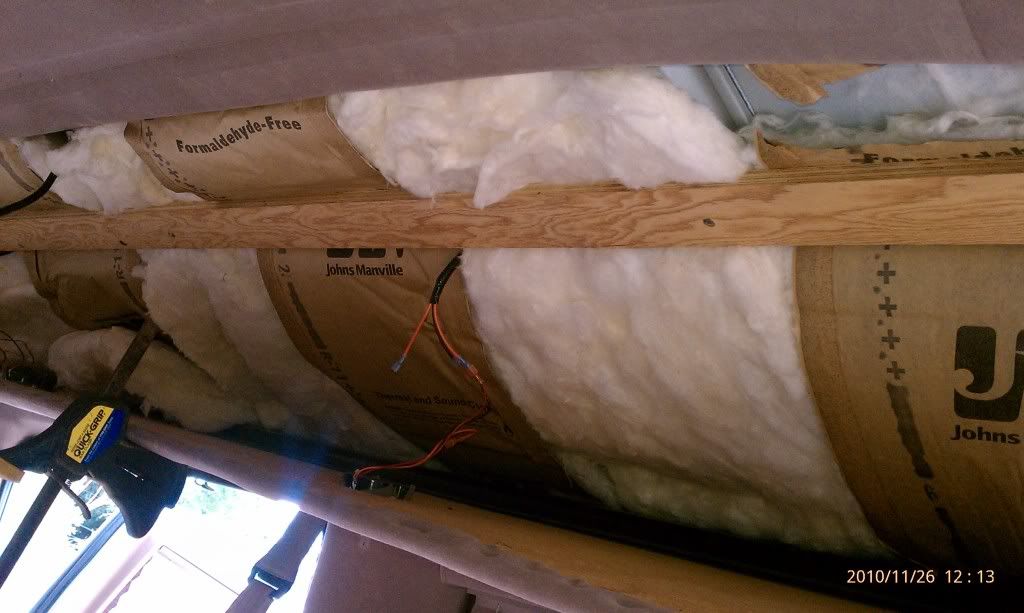
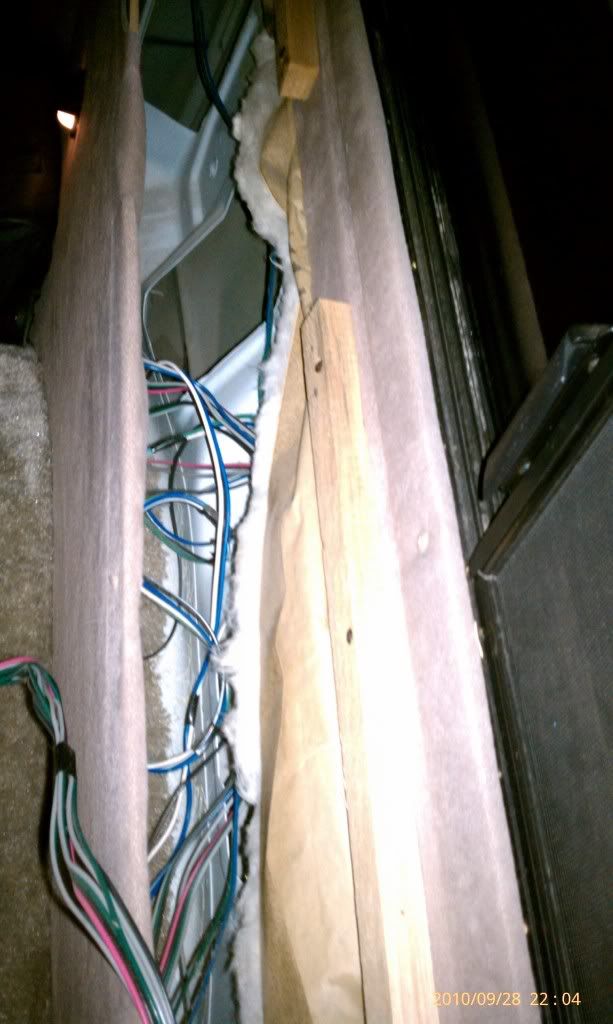
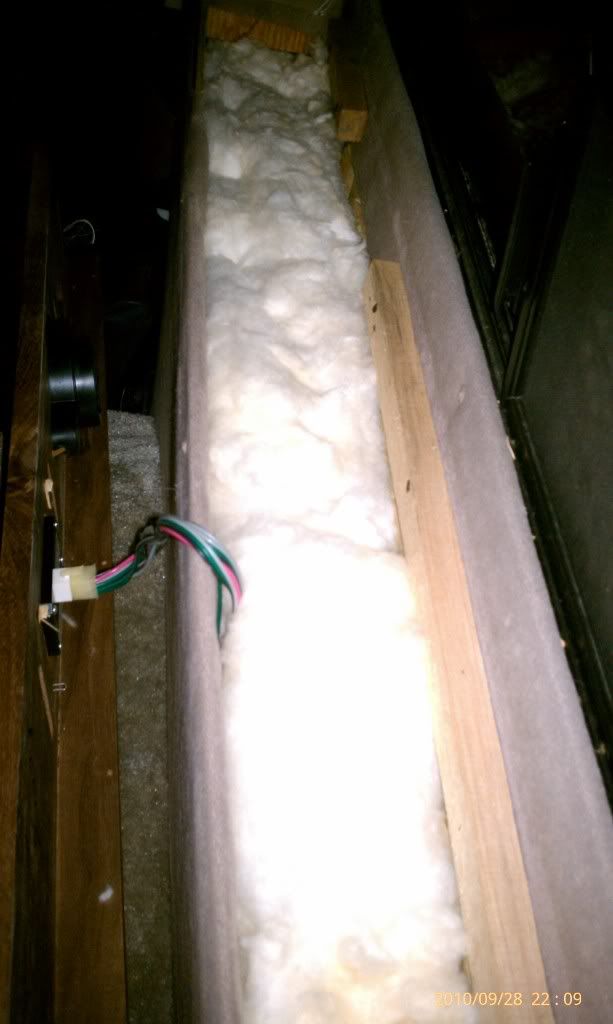
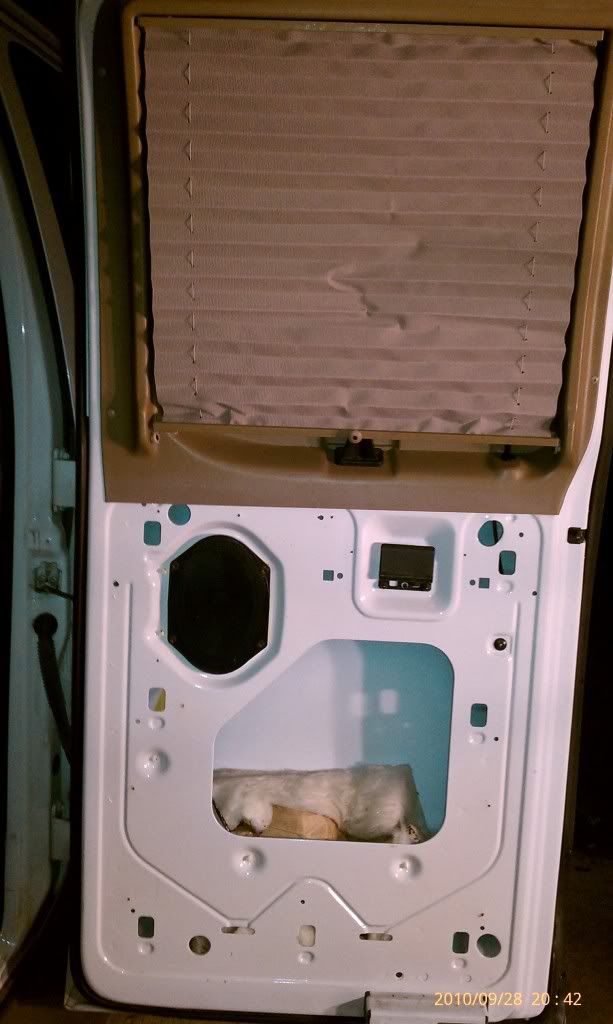

From what I have read it takes approx. 15 degree temp diff and higher humidity to sweat. If your inside humidity is higher than outside and temp is 15 degree higher your vehicle may start to sweat inside but if you pack insulation in every crack between metal and interior wall the temp / humidity on metal area inside will not be the same as what your reading with meter if you have 3-4" of insulation. I looked for mold and could not find any on the insulation from factory and that has been in there for years so if insulation soaks up moisture and then grows mold I guess mine had too much air flow around it. Either way, I would only have a problem during winter months and plan to keep the van vented and watch humidity meter. I have a full time solar roof vent which stays open so I dont expect a prob. Just wanted to offer a little info about insulation. With my A/C test results before being acceptable with no insulation, I should have a rolling ice box now.
I designed this out of need but will fab frame pieces if others need them.
for more info contact stkshooter@gmail.com



This seems to be an ongoing subject in many forums over the years but I have never seen an install like this or anyone selling kits to do so.
I've seen side window projects you set up when camping or back window installs using plywood or plastic, etc. I was looking for something that could handle off road driving and ready to use when I needed it.
I'm working on DIY website showing step by step pictures for those interested but here is a look at the in progress picture. I Plan to add solid cover over outside with louvers like you see on the old hot rod hoods. so it looks more like storage box vs air conditioner and painted to match vehicle.
My Yamaha 2000 runs A/C unit just fine since it only pulls 450 watt. (start up 4.5 amp, I tested with meter. if you wait 1-2 min. between turning unit off and restarting the pressure drops and was about 4.5-4.8 amp on restart up. Now if you pull the plug and plug it back in which you would never do the amp draw can reach 22 amps but waiting even 20-30 seconds and plugging in changes to 8-9 amps. Now wait 1-2 min. which is what the unit would do on it's own and amp draw is back to 4.5 approx.) Wanted to clear that up since I have heard people say these little units draw much more than that. This leaves enough power for everything else I would run provided A/C compressor is not on when using microwave but that is easy enough to prevent.
FYI: power boosters or capacitors for A/C can be added to larger A/C units to help smaller gen. handle start up. Do a google search, lots of DIY on the subject.
Will a 5000 btu cool the interior of an insulated van in the Florida heat ? depends on many variables but I can say it cools much better than not having A/C :a3: I placed thermometer outside in direct sunlight and one inside heated van ( Elk factory conversion van only no extra insulation has been added ) which had been sealed up in sun till 1 pm. with no window covers other than windshield. It was well over 110 degree inside and outside reads 110 in direct sunlight while in damp shaded corner of house with oak trees reads 90 then inside van reads 84 degree after 90 min. approx. with 45% humidity inside and 85% outside. Park vehicle in shade and that number quickly dropped to 74 degree. Once the sun went down and outside temp was upper 80's the inside temp fell to 63 in 90 min. with 35% humidity. Unit may not work as well as 10k to 13,5k roof air but total cost was under $500. That includes Upholstry shop after cutting hole in panel.
Because of door pillar support and locking latch / cable inside door you don't have room for a larger unit without cutting door pillar and I wouldn't suggest that unless your going to mod door support. Unit is riveted to A/C frame and then riveted to van door. because the 2 pc. slides together it sandwiches the door between them and frame is riveted to door panel inside and out. Very sturdy install. Unit sticks out 6" beyond door.
You can pick up A/C unit from Sears for $100 and when I get a chance to finish website you can see how it's done and purchase fabricated frame support pieces if you like.
Also wanted to touch on van insulation. People may think conversion vans are already insulated from the factory but as you can see by my ELK conversion pic. they are not. But mine is now. All this was done after adding A/C in rear door and should make a huge diff. I insulated windows also. Floor has 2 layers of carpet, 1 down & 1 up is how conversion company does it.






From what I have read it takes approx. 15 degree temp diff and higher humidity to sweat. If your inside humidity is higher than outside and temp is 15 degree higher your vehicle may start to sweat inside but if you pack insulation in every crack between metal and interior wall the temp / humidity on metal area inside will not be the same as what your reading with meter if you have 3-4" of insulation. I looked for mold and could not find any on the insulation from factory and that has been in there for years so if insulation soaks up moisture and then grows mold I guess mine had too much air flow around it. Either way, I would only have a problem during winter months and plan to keep the van vented and watch humidity meter. I have a full time solar roof vent which stays open so I dont expect a prob. Just wanted to offer a little info about insulation. With my A/C test results before being acceptable with no insulation, I should have a rolling ice box now.
I designed this out of need but will fab frame pieces if others need them.
for more info contact stkshooter@gmail.com
Last edited:

